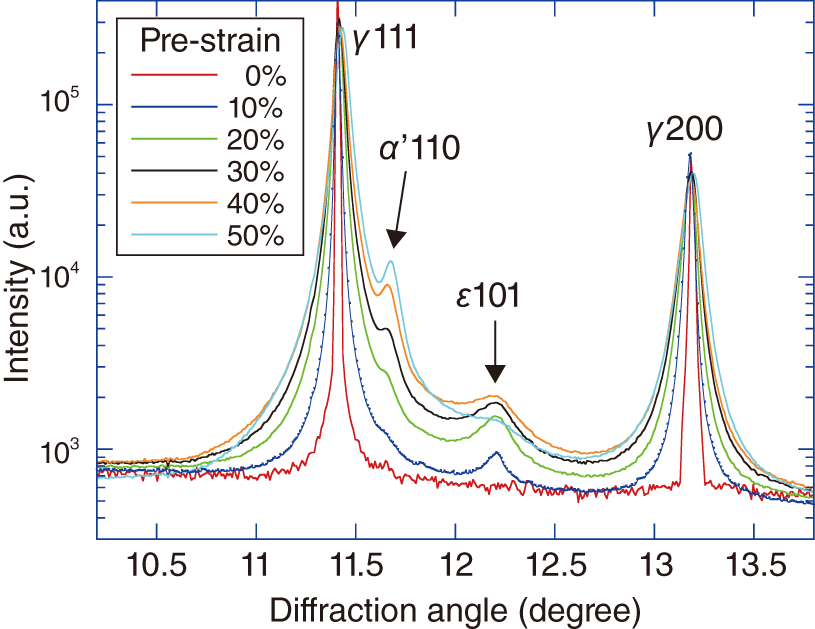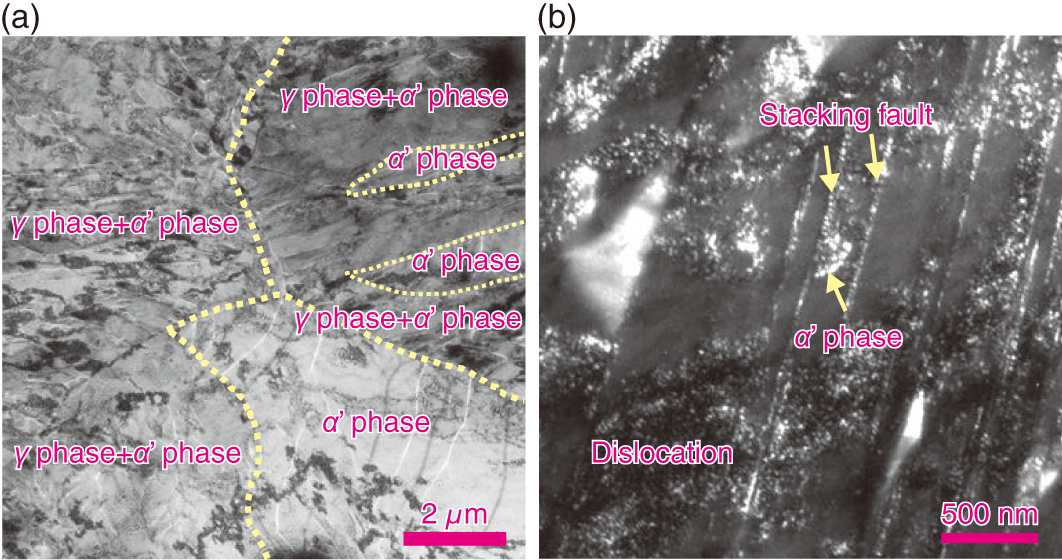
Fig.5-15 X-ray-diffraction profiles of pre-strained SUS304 specimens

Fig.5-16 Lorentz-transmission electron-microscopy photograph of an SUS304 specimen (elongation: 20%)
Stainless steel is an alloy steel containing mainly γ iron, at least 10.5% chromium, and a small quantity of alloying elements such as Ni. SUS is a designation of stainless steel, and a representative type known as SUS304 is standardized as having a Japanese Industrial Standards (JIS) containing 18% Cr and 8% Ni. As SUS304 has a well-balanced corrosion resistance and ductility and excellent mechanical properties, it is widely used in kitchens, home appliances, automobiles, railroad cars, reactor shrouds, and so on. It is known that, as the crystal structure changes, it becomes stronger, and the elongation also increases as a force is exerted upon SUS304. In order to improve characteristics such as breakability and ease of processing, it is very important to clarify the process of crystal-structure change.
The crystalline structure of SUS304 is known to change into an α’-phase body-centered cubic structure, starting with defects and dislocations occurring in the γ phase of the face-centered cubic structure. In previous studies, transmission electron microscopy has been reported to show that a hexagonal close-packed structure called the ε phase appears as an intermediate phase between the γ and α’ phases. However, the ε phase has been observed only below room temperature and it has been speculated not to appear at higher temperatures.
In this study, we investigated the generation of the ε phase at room temperature using the synchrotron-radiation-diffraction method. The experiment was carried out at the BL02B1 beamline of the large synchrotron-radiation facility SPring-8. Fig.5-15 shows the obtained X-ray-diffraction data. As the value of pre-strain increases, the generation and increase of the peak intensity of the ε phase was observed. Furthermore, it was observed that the α’ phase increased with the increase of the ε phase. Using a high-intensity light source generated at SPring-8, the ε phase could be clearly observed, though the number of crystals in the ε phase is extremely small compared to those in the γ or α’ phases. Unlike previous reports, this result shows that the ε phase is generated even at room temperature. This suggests that the γ phase was changed into an α’ phase via the intermediate ε phase.
Therefore, to clarify the formation process of the α’ phase, we observed the structure at the microscale using a Lorentz transmission electron microscope. Note that the α’ phase has ferromagnetic properties and can be distinguished from the non-magnetic γ and ε phases by this technique. When observing the pre-strained specimen under 20% elongation, the α’ phase was found to exist along the defect of the γ phase, as shown in Fig.5-16. This result suggests that the α’ phase starts with stacking faults and dislocations and develops from there.
From these measurements, the ε phase was found to be formed near the twin boundary of the γ phase and to transforms into the α’ phase through one newly discovered process of induced martensitic transformation at room temperature. We are currently investigating these properties in detail because these phases may be the origin of the properties of stainless steel.
In addition, in practical usage, SUS304 has a major problem in that the tensile ductility decreases, making the material brittle when hydrogen is added to it. Our recent studies have shown that hydrogen embrittlement occurs via the formation of a high density of ε-phase material at room temperature. The results of this study are expected to lead to elucidation of the mechanism of embrittlement in stainless steel by hydrogen, as well as the proposal and development of materials for use in hydrogen-rich environments.